Unusual textiles in Indonesia can delight not only locals but also visitors to the country. The variety of fabric types allows you to choose what suits you. You can sew yourself clothing, for example, from the popular batik or sarong – it will be a memory of the country or a souvenir for friends.

Types of Indonesian Fabrics
Interestingly, the Ministry of Education and Culture of Indonesia has declared 33 types of traditional clothing as cultural heritage. In addition to batik, other types of fabrics include songket, weaving, and other rare textiles that are hard to find. Let's explore some of them.
Batik is one of the most popular traditional Indonesian fabrics, known worldwide.
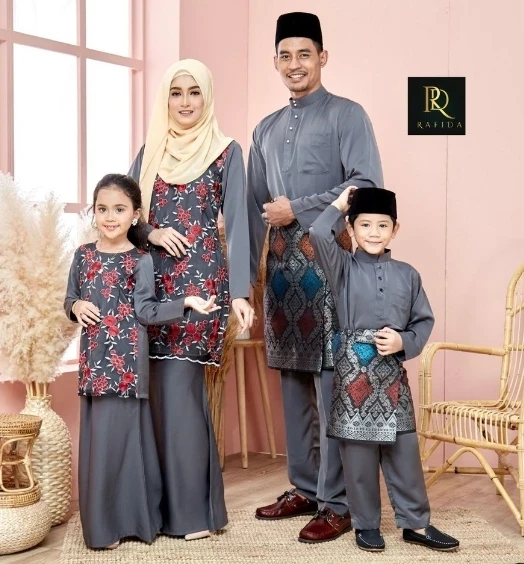
It is used not only as a material for clothing and wedding attire but also for typical Indonesian souvenirs. By the way, Indonesian craftsmen have created not only clothing with batik motifs but also various items, musical instruments... For example, the batik guitar by Haryo Sasongko, cars, tableware, wallets, bags, and even cakes. So, there are plenty of options for souvenirs.
There are many other types of traditional Indonesian fabrics, equally beautiful with exotic shades. Each of them has characteristics and philosophy representing its region of origin.
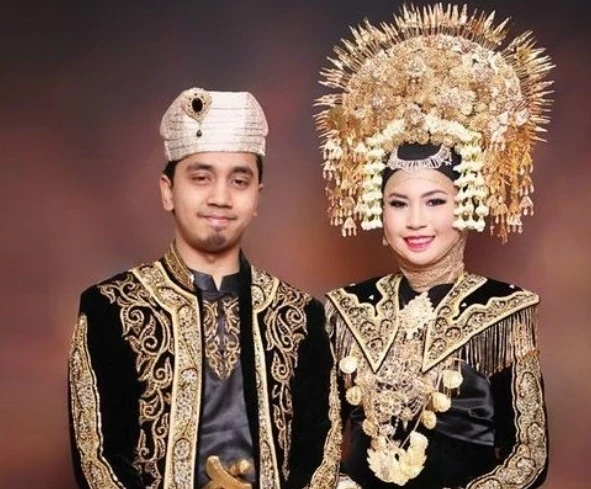
One thing that has its charm is the family-matching batik. There are modern designs and patterns that turn a loving couple into a unified whole. The cost of regular batik is approximately 100,000 to 200,000 rupiahs, and premium batik ranges from 400,000 rupiahs to a million rupiahs or more (from 6 to 100 dollars). And there is even more expensive batik.
Ikat is a fabric where the motif is created by tying threads. This technique is used to ensure that the tied part does not get dyed, forming the desired patterns.
The art of weaving ikat is well-known in certain circles within the Sasak community. If you wish to purchase a dress made from such fabric, you can visit the online store shopee.com. The approximate price is around 155,000 rupiahs (10 dollars).
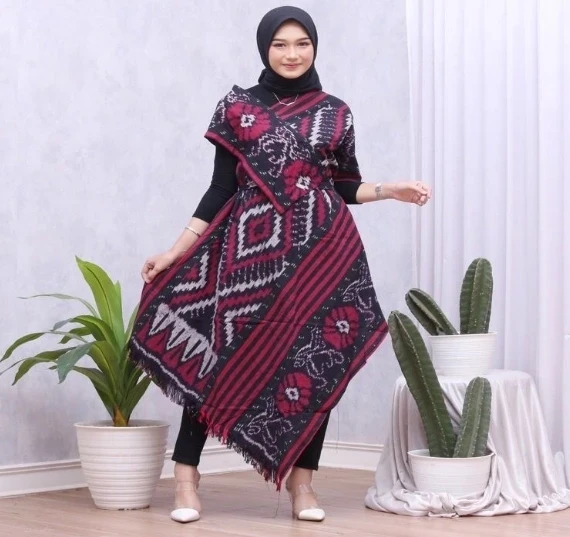
Gringsing Tenganan (Bali) is a traditional material from the village of Tenganan in the form of fabric woven from ikat.
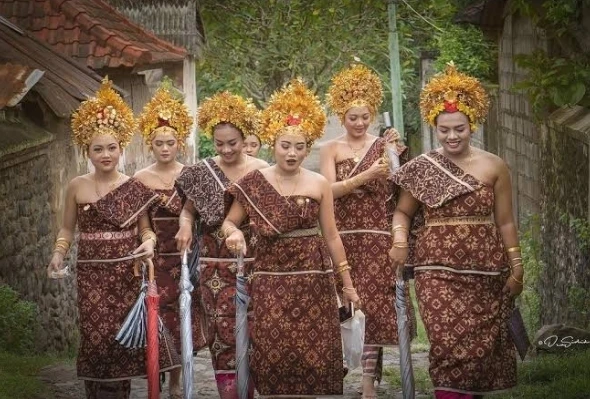
The people of Bali Aga and residents outside of Tenganan believe that this type of fabric protects against evil forces, making the fabric highly valued as unique and rare. Considering that the dyeing, thread tying, and weaving process can take from 1 to 10 years, with a significant amount of time dedicated to the dyeing process, the cost of the fabric is accordingly high – ranging from 900 thousand to millions of rupiahs.
Songket Sambas: The Malay community in Sambas began practicing traditional weaving (using techniques like ikat and songket) during the reign of the Sultan.

Songket Sambas weaving craft is widely practiced among the population. Sambas fabrics feature various motifs and patterns. The distinctive feature of this fabric is the bamboo shoot pattern, depicting young shoots in a stretched, triangular shape. The price is approximately 800 thousand rupiahs (50$).
Baby Canvas is a soft fabric with high durability, suitable for making jackets and coats. The fabric is affordable, around 17 thousand rupiahs.
Karawo is a craft of embellishing various types of fabrics with embroidered patterns using simple and colorful threads.

The process of creating Karawo embroidery involves cutting and removing threads from the fabric fibers, which are then embroidered with various threads according to the desired pattern. The cost is substantial – around 500 thousand rupiahs (31 $).
Cual fabric is a typical craft in one of the regions of Indonesia (Bangka). Weaving was initially an activity of noblewomen in Muntok, West Bangka, in the village of Patenon, in the 18th century. Cual weaving was a variety of traditional Muntok fabric, signifying the initial dyeing of threads. The cost can reach almost a million rupiahs (over 60 $).
Maduaro is a type of embroidery fabric from the Lampung province in the form of a headscarf covering the heads of the Menggala people.

The Lampung Maduaro fabric was initially brought by the ancestors of the Menggala people who performed the Hajj pilgrimage to Mecca in the 18th century. The textile costs around one and a half million rupiahs.
Ulap Doyo weaving is the art of the Benauak Dayak tribe, the Kingdom of Kutai, East Kalimantan. It is called Doyo because the foundation for the fiber consists of sturdy doyo leaves.
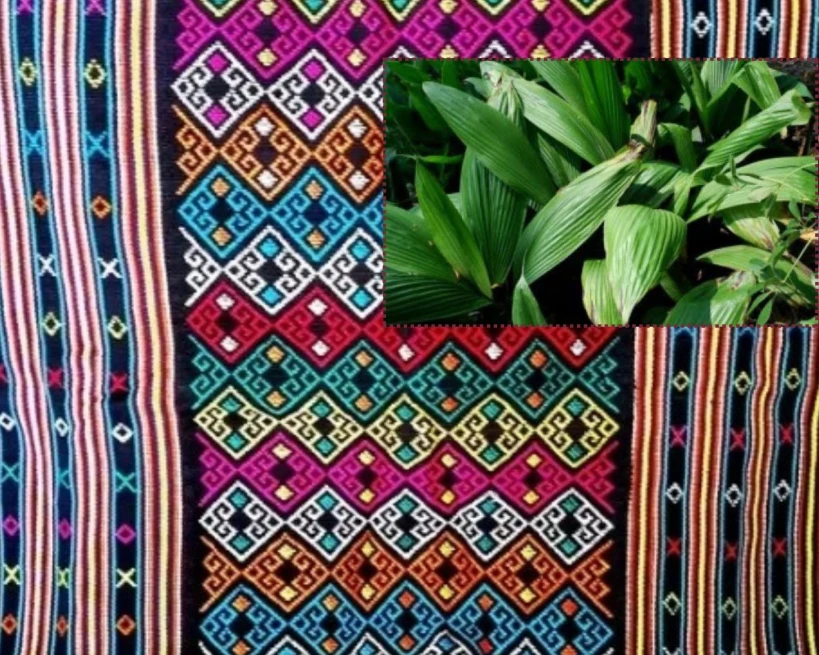
Ulap Doyo weaving existed and developed until the 17th century. At that time, people believed that the Ulap Doyo motif could be used as a characteristic of a person. Clothing for traditional events, festive ceremonies, dances, and daily life is tailored from this fabric. Ulap Doyo features a black color along with colorful and patterned weaving. The price depends on the simplicity or complexity of the pattern, ranging from 85,000 rupiahs (5.5 $) to approximately 400,000 rupiahs (25 $).
Tenun Siak is the most famous weaving craft, historically confined within palace walls. Over time, Siak weaving began to spread further. It involves weaving with cotton or silk thread and patterns of golden thread. Patterns on the fabric may include bamboo shoots, keluangu elbow, mangosteen tampuk, and more. Siak weaving products are purchased as souvenirs, gaining popularity among collectors, enthusiasts of the unique, and travelers visiting Siak. The cost is substantial, ranging from 1 to 5 million rupiahs.
Songket Palembang is one of the ancient types of traditional fabric, with evidence of its existence dating back to the third ancient kingdom in the archipelago. This type of fabric is produced from various types of threads, one of which is gold. The skill of making this fabric has been passed down from generation to generation.
During traditional ceremonies or wedding celebrations, brides in Palembang typically wear Songket as part of their ensemble with a loose cut. In terms of quality, Palembang Songket is considered one of the best in Indonesia. The price ranges from 800 thousand to one and a half million rupiahs.
Brocade, or Parça, is a fabric adorned with decor made from silk and golden thread. Masters create textured embroidery with flowers and leaves. Items are available at different price points, starting from 30 thousand rupiahs, but some can be more expensive, ranging from 300 to 500 thousand rupiahs (2 to 30 $).
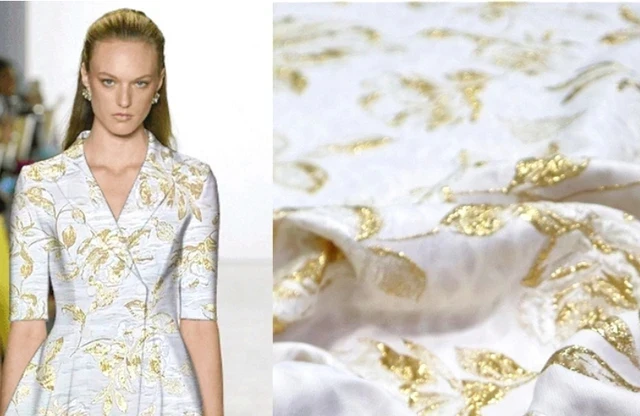
Sarong fabric is a vibrant material, approximately 4 meters in length, wrapped around the lower part of the body and tucked or tied around the waist, creating draped dresses or skirts of varying lengths, from knee to ankle. The most valuable sarongs are tightly woven with golden threads, and they are worn by both men and women. Any visitor can afford to buy such fabric and experience the Indonesian atmosphere. Prices range from 30 to 100 thousand rupiahs (2 to 6 $). There are many boutiques in Bali that offer sarongs and batik.
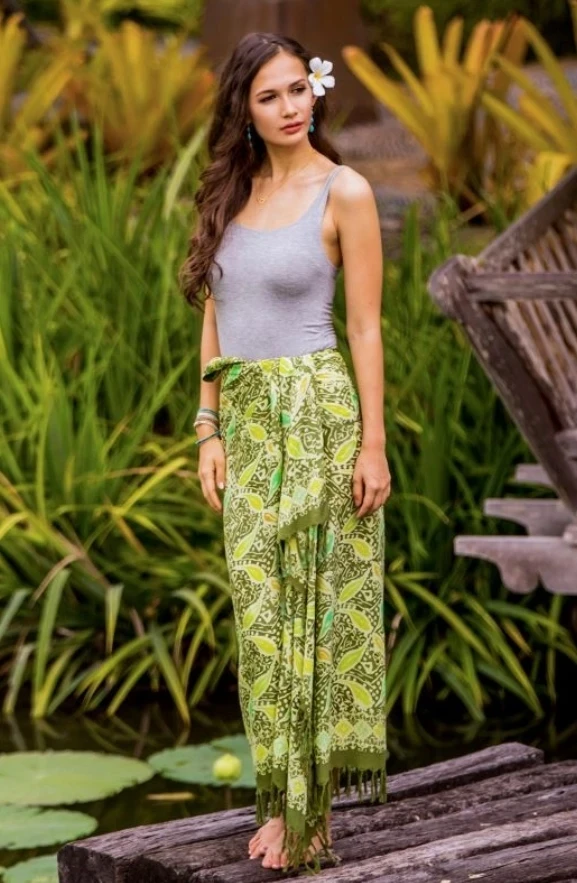
Senada Batik Bali: phone number : +62 361 731164
Bali Batik Sarongs: https://maps.app.goo.gl/oyhCenEPTVPAcZzq5
In addition to unique fabrics, Indonesia produces well-known materials such as suede, denim, viscose, satin, silk, velvet, chiffon, cashmere, lycra, knitwear, linen, cotton, polyester.
Main regions for textile production and sales
The majority of Indonesia's textile production is concentrated on the island of Java (94%), specifically in Jakarta, Bandung, and Semarang. These cities are major manufacturing centers. Additionally, there are fiber production facilities in Purwakarta, Subang, and Tangerang. Bali also has a textile industry, and custom clothing can be tailored. Here are some addresses for sewing factories in Bali:
Sidhi Group: https://maps.app.goo.gl/GFhht3TdrXQB495s6.
PT. Lambda Anugerah tekstil:https://maps.app.goo.gl/JpY28HbNjFuQfFEP8
Putra 57 Tekstil: https://maps.app.goo.gl/yoCvaXYcm1S2JnBL9
Classification of Textiles
Textile production in Indonesia is categorized into three sectors:
1. Spinning Industry: Producing fabric, fiber, and cotton. This sector is characterized by high technology with fully automated equipment.
2. Middle Sector: Involving spinning, knitting, weaving, dyeing, printing, and finishing the final product. This sector relies heavily on a large workforce.
3. Processing Sector: Encompassing the sewing industry, which doesn't require a large workforce but is a crucial part of the process, influencing the final result.
Cooperation with Other Countries
China: Cahyo Purnomo, Director of Investment and Exhibition Promotion, stated that the Indonesian government will encourage potential collaboration with China in the textile industry. Similarly, Indonesia will be utilized by China as a production base, establishing Chinese factories and selling their goods. This arrangement aims to regulate the volumes of investments from other countries into Indonesia.
Korea: Through collaboration with Korea, Indonesia's textile industry can be rejuvenated, producing high-quality products. South Korea ranked 7th among the largest investors in Indonesia in 2022, with a total investment volume of USD 2.29 billion, marking a 40.06% increase compared to the previous year.
Textile Exports from Indonesia
- Over 60% of Indonesia's textile product exports consist of finished garments.
- 35% of exports are fiber and yarn, while the rest comprises fabric.
You can add one right now!